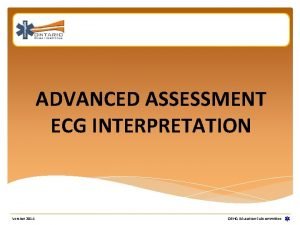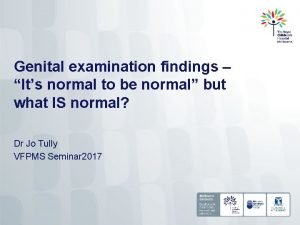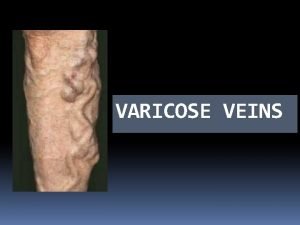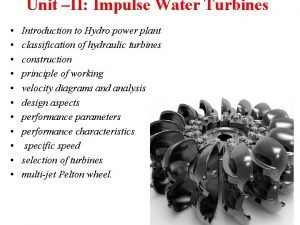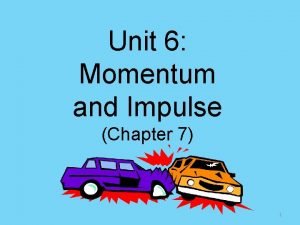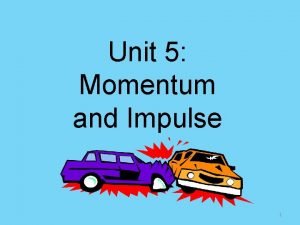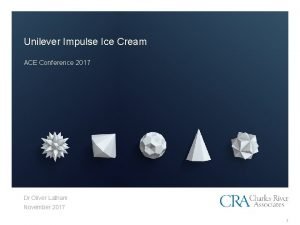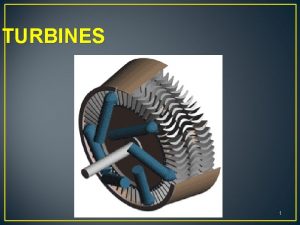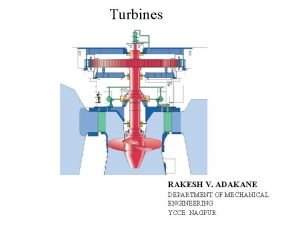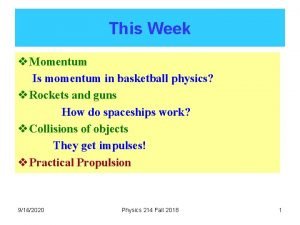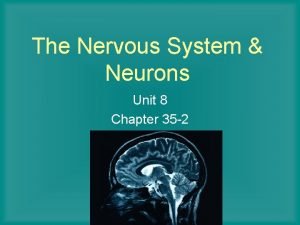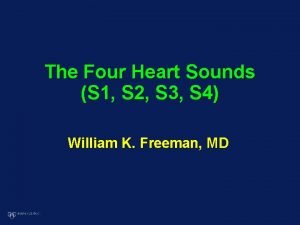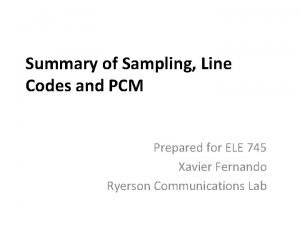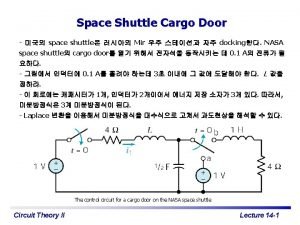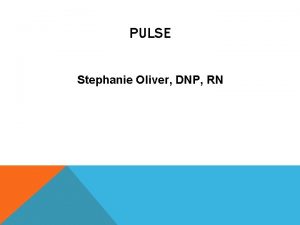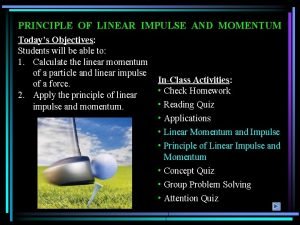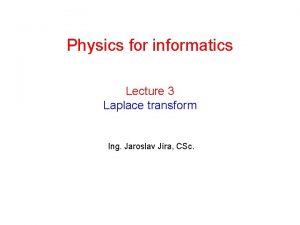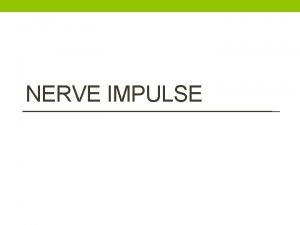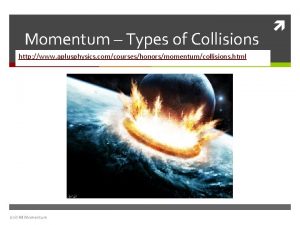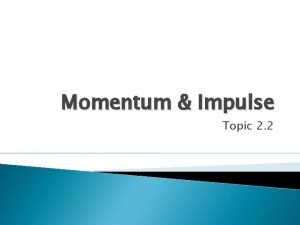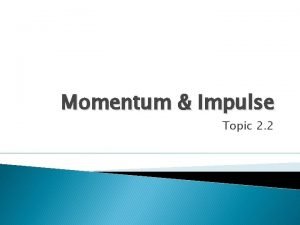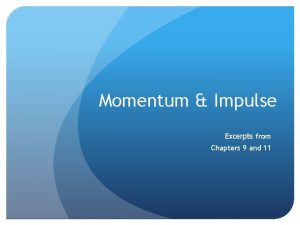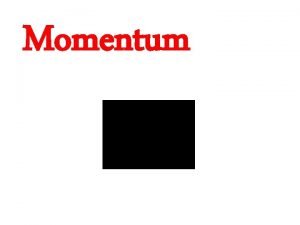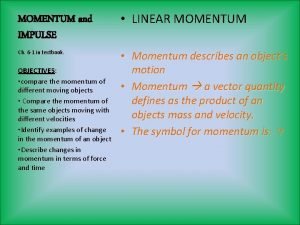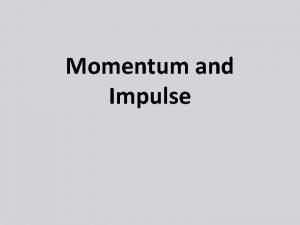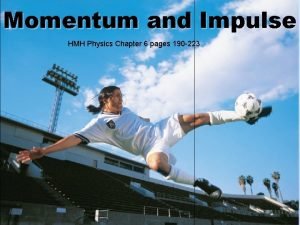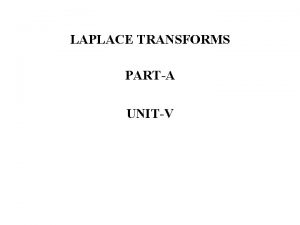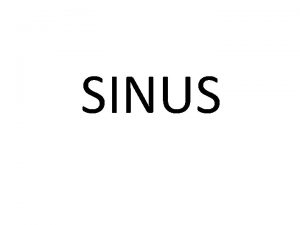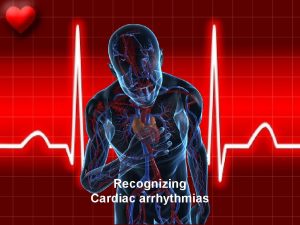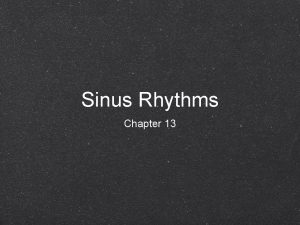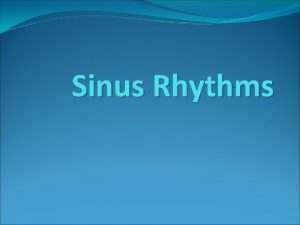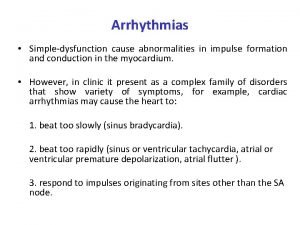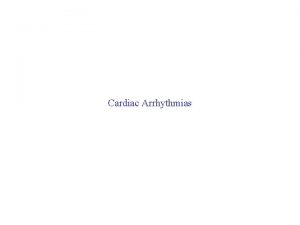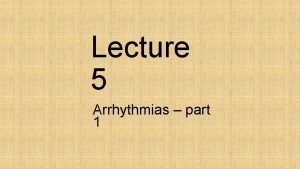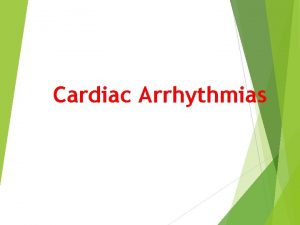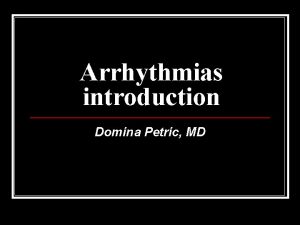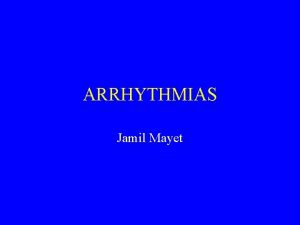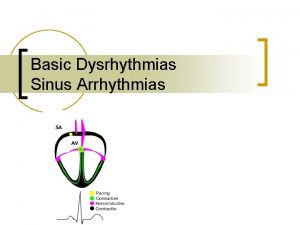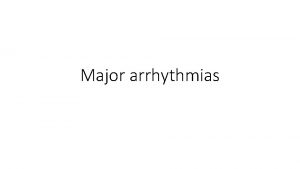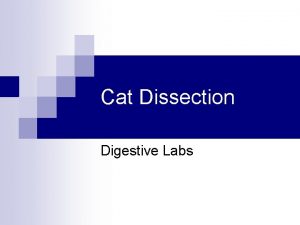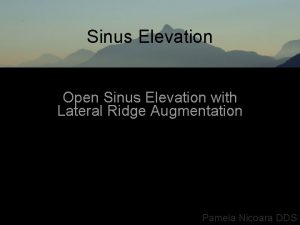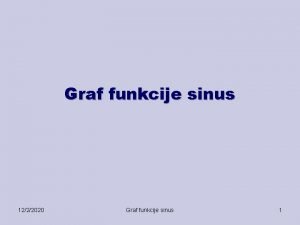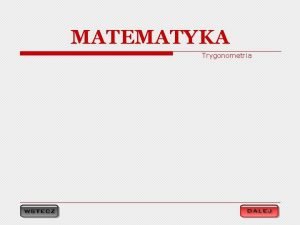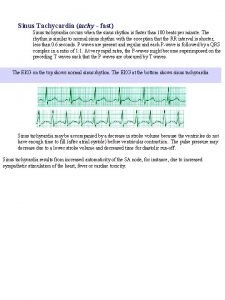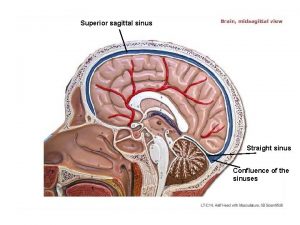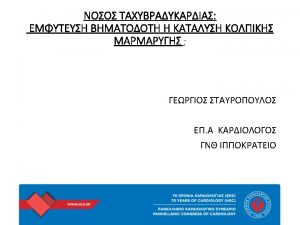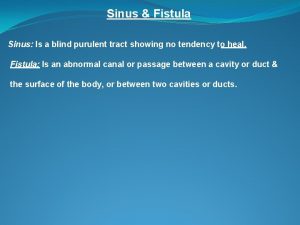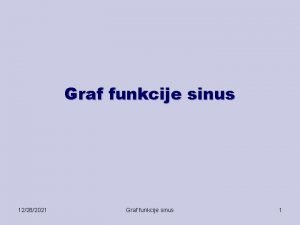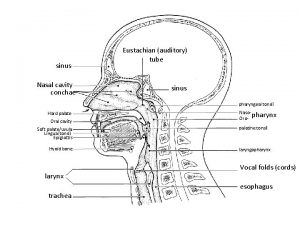Classification of Arrhythmias Normal sinus impulse formation Normal




































- Slides: 36


Classification of Arrhythmias • Normal sinus impulse formation – Normal sinus rhythm – Sinus arrhythmia Usually seen with P Wave • Disturbances of sinus impulse formation – Sinus bradycardia – Sinus tachycardia • Disturbances of supraventricular impulse formation – – Atrial premature complexes Atrial tachycardia Atrial flutter Atrial fibrillation Before the SA node was expected to fire

Disturbances of ventricular impulse formation – Ventricular premature complexesectopic focus in ventricles fires independently – – Ventricular tachycardia Ventricular systole- contraction Ventricular asystole- no contraction Ventricular fibrillation Disturbances of impulse conduction – – – – Sinus arrest or block Atrial standstill Ventricular pre-excitation First-degree AV block Second degree AV block Third degree AV block Left bundle branch block Right bundle branch block

Normal Sinus Rhythm • Normal ECG tracing depicting a normal rhythm of electrical conductivity through the heart

(Respiratory) Sinus Arrhythmia • All criteria of normal rhythm except heart and pulse rates increase with inspiration and decrease with expiration • Normal finding in brachycephalic breeds and in chronic respiratory disease • Increased number of cardiac cycles during inspiration; decreased number during expiration • Originates in the SA node

What is the normal HR for dogs and cats? • Dogs: 70 – 160 BPM • Cats: 150 – 210 BPM

Sinus Bradycardia • • • Regular sinus rhythm but heart rate is below normal Dogs under 45 lb: HR less than 70 bpm Dogs >45 lb: HR < 60 BPM Cats: 100 BPM or less CS: weakness, hypotension, syncope

Sinus Tachycardia • • • Regular sinus rhythm with increased ventricular rate Dogs less than 45 lb; HR >180 BPM Dogs more than 45 lb; HR >160 BPM Cats: HR greater than 240 BPM Causes include: pain, fever, anemia, excitement, hyperthyroidism

Atrial Premature Complexes • Premature atrial impulses originating from ectopic atrial site other than SA node • Seen in dogs and cats with atrial enlargement, electrolyte disturbances, drug reactions, congenital heart disease, and neoplasia; a normal variation in older animals • Premature P wave • QRS complexes are normal unless the P wave is so immature that it overlaps to varying degrees • PAC’s cause the regular wave to depolarize and reset the sinus node

Atrial Premature contraction/complexes Represent premature P wave/s

Atrial Tachycardia • Rapid regular rhythm originating from an atrial site other than the sinus node • May be seen in dogs with severe heart disease and in cats with cardiomyopathy or hyperthyroidism • P wave can overlap the T wave

Atrial Flutter • Appears as a regular, “sawtooth” formation between the QRS complexes • Occurs when the ventricular rate differs from the atrial rate • Single ectopic focus in atrium starts to beat fast • AV node “gatekeeper” only allows some impulses through to Ventricles • Atrial flutter is the precursor to atrial fibrillation

Fibrillation is the rapid, irregular, and unsynchronized contraction of muscle fibers

Atrial Fibrillation • Caused by numerous disorganized atrial impulses frequently bombarding the AV node • Ventricular depolarization rate is irregular and rapid • NO P waves are evident; replaced by numerous f (fibrillation) waves • QRS complexes may be normal or wide and of varying amplitude

Atrial Fibrillation Treatment: Defibrillation

Premature Ventricular Complexes (PVCs) • “Premature beats” - Cardiac impulses initiated within the ventricles instead of the sinus node • Ventricle discharges before the arrival of the next anticipated impulse from the SA node • Can occur at any rate but pose a greater danger with tachycardia • Associated with congenital defects, cardiomyopathy, GDV, drug reactions, cardiac neoplasia, anemia, acidosis, hyperthyroidism, hypokalemia

PVCs (cont’d) • The P wave is often not seen on the ECG tracing • A wide, distorted QRS complex is also evident • The beat preceding the PVC and the beat following are usually equal to the time of two normal beats

Ventricular Tachycardia “V-Tach” • One strong Ventricle ectopic focus that hijacks the conduction system of the heart. Patient may be “stable” with a pulse or unstable with “no pulse” • AV node is on its own and SA node is not working • A series of four or more PVCs in a row • Potentially life threatening • Treatment is reset heart via defibrillation

Ventricular Fibrillation • The mechanical pumping of the heart is not evident on the ECG • Many weak ectopic foci present in ventricles • The ECG has bizarre baseline with prominent undulations due to weak and uncoordinated ventricular contractions • Low to absent cardiac output • Associated with shock, trauma, electrolyte imbalances, drug reactions, electric shock, hypothermia, cardiac surgery • Rapidly fatal

Ventricular Fibrillation • There are no recognizable P or QRS complexes • Irregular, chaotic, deformed reflections of varying width, amplitude, and shape • Unless controlled immediately, ventricular fibrillation will result in cardiac arrest

Sinus Arrest or Block • Conduction disturbance in which normal sinus rhythm is interrupted by an occasional, prolonged failure of the impulse generated by the SA node to reach the atria or SA does not initate an impulse at all

Heart Block • Electrical impulse is not transmitted through the heart

First Degree AV Block • Delay in conduction of an impulse through the AV junction and Bundle of His • The PR interval is longer than normal • This type of heart block is a result of a minor conduction defect • Seen in older patients secondary to degenerative changes in the conduction system

Second Degree AV Block • Some atrial pulses are not conducted through the AV node and therefore do not cause depolarization of the ventricles • There are two types: – Type I (Mobitz type I or “Wenckebach” AV block): progressive lengthening of the PR interval until no complex is conducted – P waves occurring without QRS complexes “dropped beats”

Second Degree AV Block (cont’d) • Type II: A intermittent block at the AV node, that conducts some impulses but blocks others • A constant PR interval that is usually of normal duration with random dropped beats – In the case of type 2 block, atrial contractions are not regularly followed by ventricular contraction

Third degree AV block (Complete Heart Block) • The cardiac impulse is completely blocked in the region of the AV junction and/or all bundle branches • The most severe heart block • No relationship between P waves and QRS complexes; atria and ventricles each beat independently and do not communicate at all • Atrial rate is normal

Heart Blocks

Asystole (Flat line) Cardiac Arrest: No cardiac electrical activity, no cardiac output or blood flow. At this point the heart will not respond to defibrillation Causes: hypoxia, hypothermia, hypoglycemia, or an electrode has fallen off (hopefully)

Asystole (Flat line) Medications of choice: Epinephrine or Atropine along with manual chest compressions.

Tetralogy of Fallot • It occurs in about 5 out of every 10, 000 babies • Ventricular septal defect (hole between the right and left ventricles of the heart) • Narrowing of the pulmonary outflow tract (tube that connects the heart with the lungs) – Often times pulmonary valve needs replacenment • An aorta (large artery that carries oxygenated blood to the body) that grows from both ventricles, rather than exclusively from the left ventricle • A thickened muscular wall of the right ventricle (right ventricular hypertrophy) • Together, these defects cause oxygen deficient blood to flow out of the heart and into the rest of the body


Artifacts • The word artifact is similar to artificial in the sense that it is often used to indicate something that is not natural (i. e. man-made). In electrocardiography, an ECG artifact is used to indicate something that is not "heart-made. " These include (but are not limited to) electrical interference by outside sources, electrical noise from elsewhere in the body, poor contact, and machine malfunction. Artifacts are extremely common, and knowledge of them is necessary to prevent misinterpretation of a heart's rhythm

Muscle Tremor Interference • If your patient is not calm and comfortable, or just really nervous and shaky…the reading may look like this. Also caused by happy, purring feline friends • Reapplying or readjusting the clips may help • A towel or blanket can be placed on patient to help calm them • You can also place your hand on the chest of the patient, taking care not to apply too much pressure (will interfere with reading)

Patient Movements

Electrical Interference • Remember that rubber mat and how you checked your machine for causes of bad ground? • Interference can be caused by other machinery such as a pulse oximeter or BP monitor that is hooked up to animal; even fluorescent lighting

Loose Electrodes
 Sinus arrest vs sinus block
Sinus arrest vs sinus block Contoh soal selisih sinus dan cosinus
Contoh soal selisih sinus dan cosinus Formation initiale vs formation continue
Formation initiale vs formation continue Premature junctional contraction
Premature junctional contraction 膽固醇 正常值
膽固醇 正常值 It's normal to be normal
It's normal to be normal Work energy theorem
Work energy theorem Vitals signs definition
Vitals signs definition Pratt test varicose veins
Pratt test varicose veins Impulse and reaction turbine
Impulse and reaction turbine Unit 6 momentum and impulse
Unit 6 momentum and impulse Units of momentum
Units of momentum Unilever impulse
Unilever impulse Bookspar
Bookspar Difference between reaction turbine and impulse turbine
Difference between reaction turbine and impulse turbine Momentum in basketball physics
Momentum in basketball physics Nerve impulse transmission steps
Nerve impulse transmission steps Unit impulse function laplace
Unit impulse function laplace S
S Under-sampling
Under-sampling Nasa space shuttle
Nasa space shuttle Apical impulse location
Apical impulse location Linear impulse momentum equation
Linear impulse momentum equation Linear momentum and linear impulse
Linear momentum and linear impulse Laplace inverse formula
Laplace inverse formula Nerve impulse transmission steps
Nerve impulse transmission steps Types of collision
Types of collision Mv mu
Mv mu F=mv-mu
F=mv-mu Symbol for impulse
Symbol for impulse Importance of momentum
Importance of momentum Use of momentum and impulse as safety equipment in vehicles
Use of momentum and impulse as safety equipment in vehicles Momentum is a vector quantity
Momentum is a vector quantity When a dish falls will the impulse be less
When a dish falls will the impulse be less Impulse (physics)
Impulse (physics) Importance of momentum and impulse
Importance of momentum and impulse Laplace
Laplace



